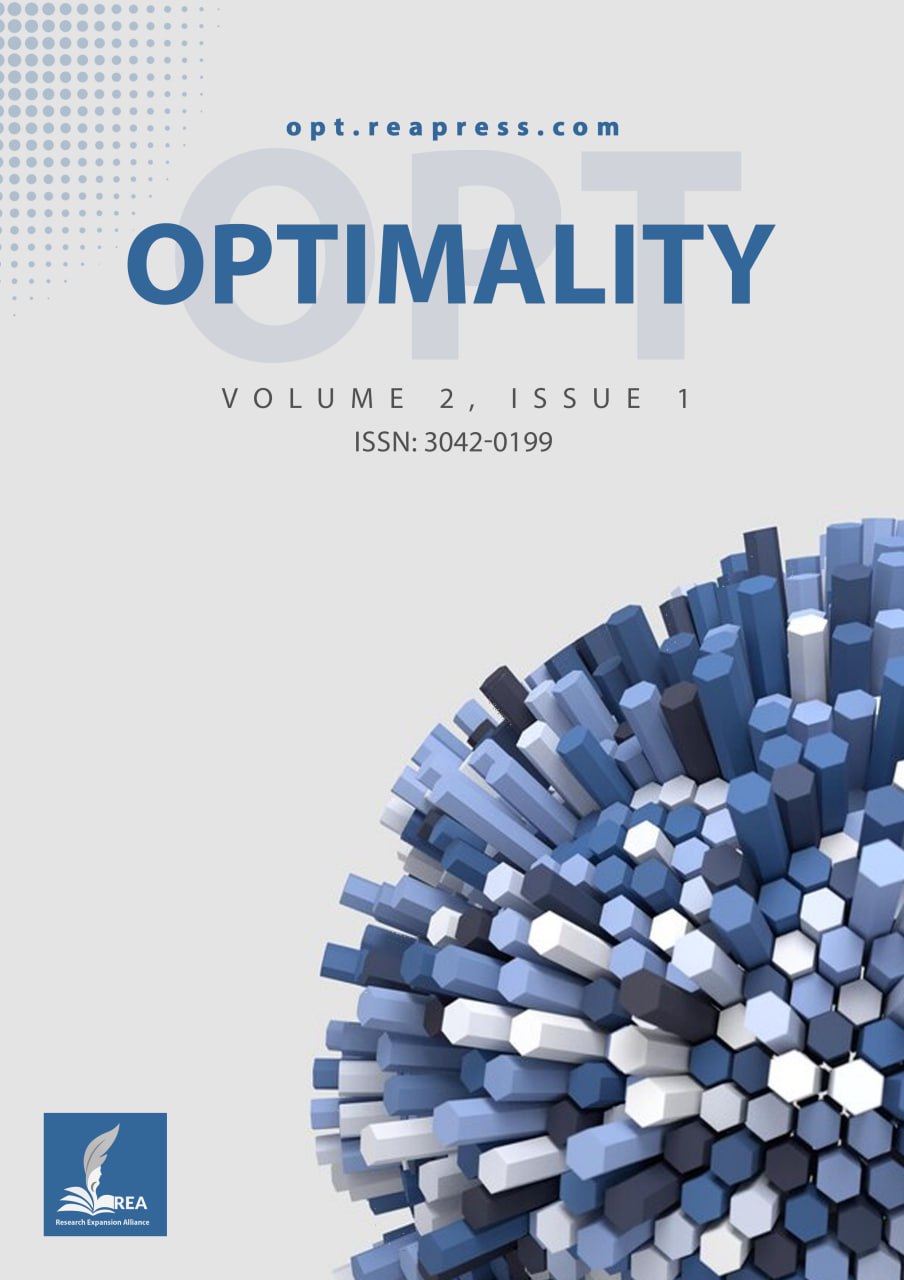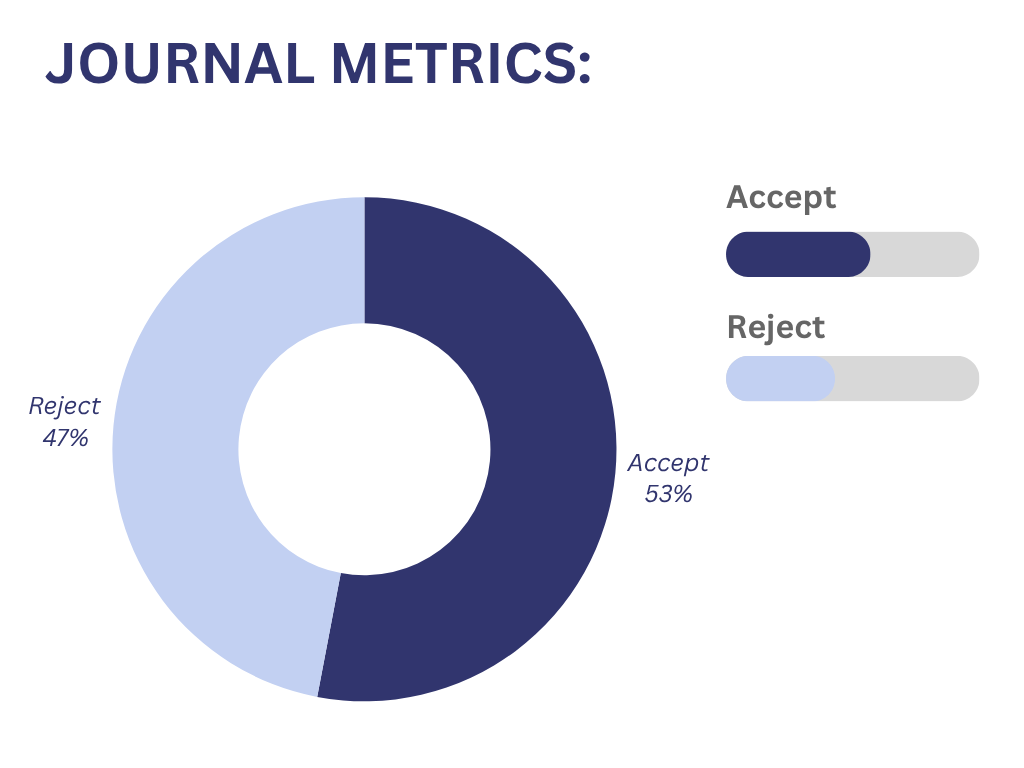Integer Programming Problems with Fermatean Fuzzy Parameters Using NAZ-Cut
Abstract
Integer Programming Problems (IPPs) play a critical role in solving real-world optimization scenarios where decision variables must be integers, such as in scheduling, logistics, and resource allocation. Traditional methods like Branch and Bound and Cutting Plane techniques have been widely used for solving such problems. In 2003, Bari and Ahmad introduced the NAZ-cut method, a straightforward and computationally efficient approach to solving IPPs by systematically reducing the feasible solution space through the addition of specific constraints. This paper presents an enhanced NAZ-cut framework for solving IPPs, particularly in the context of Fermatean fuzzy environments, where uncertainty in parameters is modeled using Fermatean fuzzy sets. A new approach is proposed to minimize computational effort by excluding specific integer candidate solutions based on a well-defined criterion. A supporting theorem is provided to justify this exclusion, ensuring that only feasible and potentially optimal points are considered. The method is demonstrated through a numerical example, highlighting the effectiveness of the proposed strategy in simplifying the search process and improving computational efficiency.
Keywords:
NAZ cut, Fermatean fuzzy paramaters, Branch and bound methods, Cutting plane methods, OptimizationReferences
- [1] Antunes, C. H., Alves, M. J., & Clímaco, J. (2016). Multiobjective linear and integer programming. Cham, Switzerland: Springer. https://link.springer.com/book/10.1007/978-3-319-28746-1
- [2] Wolsey, L. A. (2020). Integer programming. John Wiley & Sons. https://www.wiley.com/en-us/Integer+Programming%2C+2nd+Edition-p-9781119606536
- [3] Paneque, M. P., Bierlaire, M., Gendron, B., & Azadeh, S. S. (2021). Integrating advanced discrete choice models in mixed integer linear optimization. Transportation research part b: methodological, 146, 26–49. https://doi.org/10.1016/j.trb.2021.02.003
- [4] Cornuéjols, G., Trick, M. A., & Saltzman, M. J. (1995). A tutorial on integer programming. https://cs.wmich.edu/gupta/teaching/cs6310/lectureNotes_cs6310/integer%20LP%20applications%20and%20solutions%20from%20Clemson%201995.pdf
- [5] Papalexopoulos, T. P., Tjandraatmadja, C., Anderson, R., Vielma, J. P., & Belanger, D. (2022, June). Constrained discrete black-box optimization using mixed-integer programming. International Conference on Machine Learning (pp. 17295-17322). PMLR. https://proceedings.mlr.press/v162/papalexopoulos22a.html
- [6] Pisaruk, N. (2019). Mixed integer programming: Models and methods. Minsk: bsu. https://www.researchgate.net
- [7] Naderi, B., Ruiz, R., & Roshanaei, V. (2023). Mixed-integer programming vs. constraint programming for shop scheduling problems: new results and outlook. INFORMS journal on computing, 35(4), 817–843. https://doi.org/10.1287/ijoc.2023.1287
- [8] Carter, M., Price, C. C., & Rabadi, G. (2018). Operations research: a practical introduction. Chapman and Hall/CRC. https://www.taylorfrancis.com/books/mono/10.1201/9781315153223/operations-research-michael-carter-camille-price-ghaith-rabadi
- [9] Shoukat, R. (2024). Integrated supply chain plan under multiple distribution networks: an implementation of mixed integer linear programming. Circular economy and sustainability, 4(4), 2599–2623. https://doi.org/10.1007/s43615-024-00404-3
- [10] Kardoš, J. (2020). High-performance interior point methods [Thesis] https://folia.unifr.ch/global/documents/319135
- [11] Kemppainen, E. (2020). Imcomplete maxsat solving by linear programming relaxation and rounding. [Thesis]. https://helda.helsinki.fi/server/api/core/bitstreams/06c4b179-235b-4f52-832a-62094d508f61/content
- [12] Morrison, D. R., Jacobson, S. H., Sauppe, J. J., & Sewell, E. C. (2016). Branch-and-bound algorithms: A survey of recent advances in searching, branching, and pruning. Discrete optimization, 19, 79–102. https://doi.org/10.1016/j.disopt.2016.01.005
- [13] Basu, A., Conforti, M., Di Summa, M., & Jiang, H. (2023). Complexity of branch-and-bound and cutting planes in mixed-integer optimization. Mathematical programming, 198(1), 787–810. https://doi.org/10.1007/s10107-022-01789-5
- [14] Deza, A., & Khalil, E. B. (2023). Machine learning for cutting planes in integer programming: A survey. ArXiv preprint arxiv:2302.09166. https://arxiv.org/abs/2302.09166
- [15] Jiao, H., Wang, W., & Shang, Y. (2023). Outer space branch-reduction-bound algorithm for solving generalized affine multiplicative problems. Journal of computational and applied mathematics, 419, 114784. https://doi.org/10.1016/j.cam.2022.114784
- [16] Dantzig, G., Fulkerson, R., & Johnson, S. (1954). Solution of a large-scale traveling-salesman problem. Journal of the operations research society of america, 2(4), 393–410. https://doi.org/10.1287/opre.2.4.393
- [17] Markowitz, H. M., & Manne, A. S. (1957). On the solution of discrete programming problems. Econometrica: journal of the econometric society, 84–110. https://doi.org/10.2307/1907744
- [18] Gomory, R. E. (2009). Outline of an algorithm for integer solutions to linear programs and an algorithm for the mixed integer problem. 50 years of integer programming 1958-2008: from the early years to the state-of-the-art (pp. 77–103). Springer. https://doi.org/10.1007/978-3-540-68279-0_4
- [19] Gomory, R. E. (1960). All-integer programming algorithm. International Business Machines Corporation.
- [20] Charnes, A., & Cooper, W. W. (1962). Programming with linear fractional functionals. Naval research logistics quarterly, 9(3–4), 181–186. https://doi.org/10.1002/nav.3800090303
- [21] Young, R. D. (1965). A primal (all-integer) integer programming algorithm. J. res. nat. bur. standards.—1965, b, 69, 213–250. https://books.google.com/books
- [22] BnnoBRs, J. (1962). Partitioning procedures for solving mixed-variables programming problems. Numer. math, 4(1), 238–252. http://www.im-uff.mat.br/puc-rio/disciplinas/2006.1/soe/arquivos/benders-numerische-mathematik-1962.pdf
- [23] Harris, P. M. J. (1964). An algorithm for solving mixed integer linear programmes. Journal of the operational research society, 15(2), 117–132. https://doi.org/10.1057/jors.1964.24
- [24] Trotter Jr, L. E., & Shetty, C. M. (1974). An algorithm for the bounded variable integer programming problem. Journal of the acm (jacm), 21(3), 505–513. https://doi.org/10.1145/321832.321848
- [25] Granot, D., & Granot, F. (2011). On integer and mixed integer fractional. Studies in integer programming, 1, 221–231. https://books.google.com/books
- [26] Land, A. H., & Doig, A. G. (2009). An automatic method for solving discrete programming problems. In 50 years of integer programming 1958-2008: from the early years to the state-of-the-art (pp. 105–132). Springer. https://doi.org/10.1007/978-3-540-68279-0_5
- [27] Bertier, P., & Roy, B. (1965). Une procédure de résolution pour une classe de problèmes pouvant posséder un caractère combinatoire. Bulletin du centre international de calcul de rome.
- [28] Balas, E. (1968). A note on the branch-and-bound principle. Operations research, 16(2), 442–445. https://pubsonline.informs.org/doi/pdf/10.1287/opre.16.2.442
- [29] Mitten, L. G. (1970). Branch-and-bound methods: General formulation and properties. Operations research, 18(1), 24–34. https://doi.org/10.1287/opre.18.1.24
- [30] Guignard, M., & Spielberg, K. (1981). Logical reduction methods in zero-one programming—minimal preferred variables. Operations research, 29(1), 49–74. https://doi.org/10.1287/opre.29.1.49
- [31] Lenstra Jr, H. W. (1983). Integer programming with a fixed number of variables. Mathematics of operations research, 8(4), 538–548. https://doi.org/10.1287/moor.8.4.538
- [32] Hoffman, K. L., & Padberg, M. (1991). Improving LP-representations of zero-one linear programs for branch-and-cut. ORSA journal on computing, 3(2), 121–134. https://doi.org/10.1287/ijoc.3.2.121
- [33] Savelsbergh, M. W. P. (1994). Preprocessing and probing techniques for mixed integer programming problems. ORSA journal on computing, 6(4), 445–454. https://doi.org/10.1287/ijoc.6.4.445
- [34] Balas, E., Ceria, S., Cornuéjols, G., & Natraj, N. (1996). Gomory cuts revisited. Operations research letters, 19(1), 1–9. https://doi.org/10.1016/0167-6377(96)00007-7
- [35] Weismantel, R. (1997). On the 0/1 knapsack polytope. Mathematical programming, 77(3), 49–68. https://doi.org/10.1007/BF02614517
- [36] Kesavan, P., Allgor, R. J., Gatzke, E. P., & Barton, P. I. (2004). Outer approximation algorithms for separable nonconvex mixed-integer nonlinear programs. Mathematical programming, 100(3), 517–535. https://doi.org/10.1007/s10107-004-0503-1
- [37] Frangioni, A., & Gentile, C. (2006). Perspective cuts for a class of convex 0--1 mixed integer programs. Mathematical programming, 106(2), 225–236. https://doi.org/10.1007/s10107-005-0594-3
- [38] Vyve, M. Van, & Wolsey, L. A. (2006). Approximate extended formulations. Mathematical programming, 105(2), 501–522. https://doi.org/10.1007/s10107-005-0663-7
- [39] Lay, E. H., Jacobson, A. R., Holzworth, R. H., Rodger, C. J., & Dowden, R. L. (2007). Local time variation in land/ocean lightning flash density as measured by the World Wide Lightning Location Network. Journal of geophysical research: atmospheres, 112(D13). https://doi.org/10.1029/2006JD007944
- [40] Cadoux, T. J. (2008). The Roman carcer and its adjuncts. Greece & rome, 55(2), 202–221. https://doi.org/10.1017/S0017383508000533
- [41] Basu, A., Conforti, M., & Di Summa, M. (2015). A geometric approach to cut-generating functions. Mathematical programming, 151(1), 153–189. https://doi.org/10.1007/s10107-015-0890-5
- [42] Jansen, K., & Rohwedder, L. (2023). On integer programming, discrepancy, and convolution. Mathematics of operations research, 48(3), 1481–1495. https://doi.org/10.1287/moor.2022.1308
- [43] Hooker, J. N. (2024). Integer programming duality. Encyclopedia of optimization (pp. 1–13). Springer. https://doi.org/10.1007/978-0-387-74759-0_289
- [44] Goswami, K., Schmelcher, P., & Mukherjee, R. (2024). Integer programming using a single atom. Quantum science and technology, 9(4), 45016. https://iopscience.iop.org/article/10.1088/2058-9565/ad6735/pdf
- [45] Senapati, T., & Yager, R. R. (2020). Fermatean fuzzy sets. Journal of ambient intelligence and humanized computing, 11(2), 663–674. https://doi.org/10.1007/s12652-019-01377-0
- [46] Adhami, A. Y., & Rabbani, Q. (n.d.). A procedure for solving integer bilevel linear programming problems. International journal of innovative research in science, engineering and technology, 3(1), 8233- 8237. https://citeseerx.ist.psu.edu/document?repid=rep1&type=pdf&doi=5ceb62d93dc3eb8a34fcdf78408caec3c667c951
- [47] Haseen, S., Sadia, S., Bari, A., & Ali, Q. M. (2014). Integer Programming: NAZ cut and AT cut. International journal of engineering science and technology, 6(4), 128-137. https://www.researchgate.net/profile/Sanam-Haseen/publication/281368220_Integer_Programming_NAZ_cut_and_A-T_cut/links/55e3f8b008aecb1a7cc9e059/Integer-Programming-NAZ-cut-and-A-T-cut.pdf
- [48] Theodorakatos, N. P., Babu, R., & Moschoudis, A. P. (2023). The branch-and-bound algorithm in optimizing mathematical programming models to achieve power grid observability. Axioms, 12(11), 1040. https://doi.org/10.3390/axioms12111040



